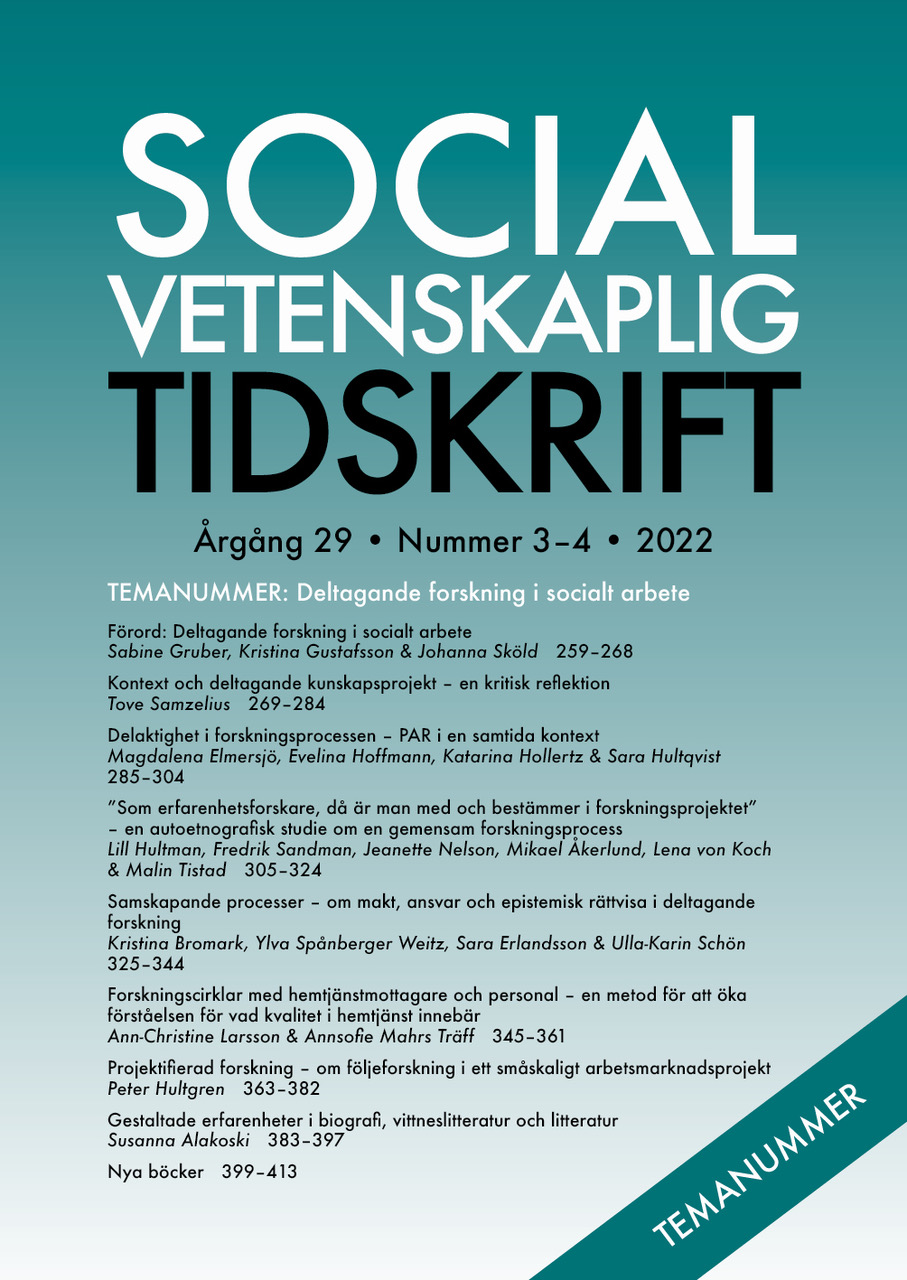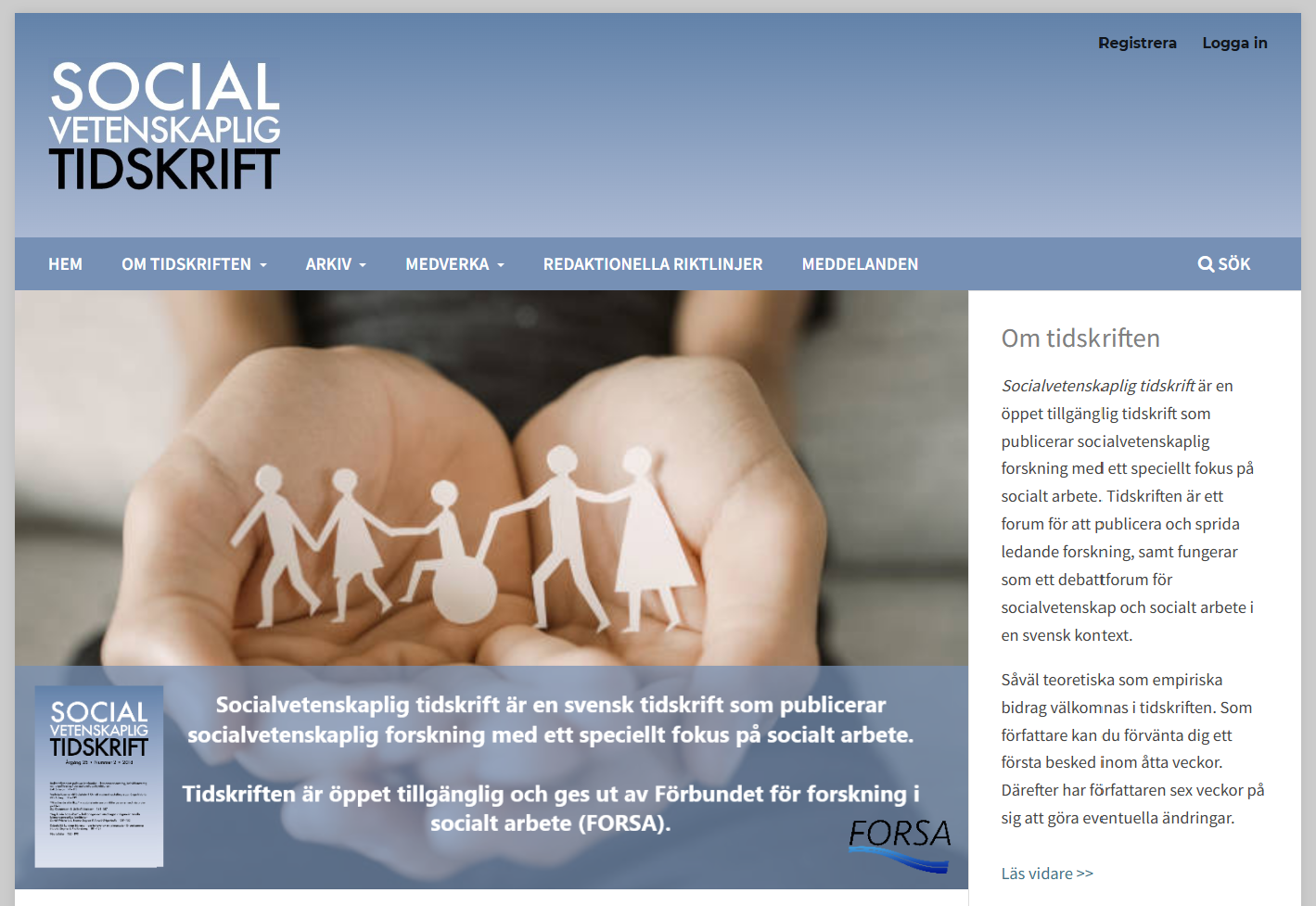"Som erfarenhetsforskare, då är man med och bestämmer i forskningsprojektet"
- en autoetnografisk studie om en gemensam forskningsprocess
DOI:
https://doi.org/10.3384/SVT.2022.29.3-4.4673Nyckelord:
participatory research, participatory design, co-creative processes, implementation, epistemic injusticeAbstract
'As a community researcher, you get to make decisions in the research project’ – an autoethnographic study about a joint research process
In a participatory action research project, we emphasize experiences of collaboration between academic and community researchers by applying analytical autoethnography. The aim of the article is to describe the research process which involves both individual and collaborative processes, and to analyze challenges in relation to participation in the ongoing research process. We identified four themes: Start-up and initial challenges, Conditions and structural prerequisites for collaboration, Joint development of work methods and Power and role distribution. Our findings are presented in two separate analyses; a collaborative inductive analysis and an academic led theoretical analysis in which Arnstein’s ladder of participation and Fricker’s concept of epistemic injustice are utilized in order to scrutinize challenges related to different degrees of participation in the research process. The results demonstrate that shared hermeneutic resources are necessary for the mitigation of epistemic injustice and enablement of mutual learning processes, such as collective writing processes. The results also indicate that a full participation for community researchers in the entire research process was difficult to achieve, both in relation to structural resources such as allocated time, and in relation to perceptions of meaning- making aspects, for example, individual interests and contributionsin terms of knowledge.
Downloads
Publicerad
Referera så här
Nummer
Sektion
Licens

Det här verket är licensierat under en Creative Commons Erkännande 4.0 Internationell-licens.
Allt material i Socialvetenskaplig tidskrift publiceras sedan 2022 (Vol 28 Nr 2) med omedelbar öppen tillgång (open access), under Creative Commons-licensen CC BY 4.0. Upphovsrätten till innehållet tillhör respektive författare.
Allt innehåll i tidskriften är fritt tillgängligt utan kostnad och får fritt läsas, laddas ned, kopieras, delas, skrivas ut och länkas. När innehållet används måste författare, källa och licens anges. Författaren kan fritt göra sin publicerade text tillgänglig på institutionella och internetbaserade arkiv, exempelvis sitt lärosätes digitala arkiv eller andra tjänster för detta.
Inga publiceringsavgifter tas ut vid publicering i Socialvetenskaplig tidskrift.


